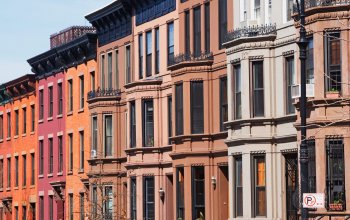
Is a new tower coming to South Street Seaport’s historic district?

 A parking lot currently exists on 250 Water Street—a contested site in the South Street Seaport poised for redevelopment. | Caroline Spivack/Curbed NY
A parking lot currently exists on 250 Water Street—a contested site in the South Street Seaport poised for redevelopment. | Caroline Spivack/Curbed NY
A developer is eyeing an air rights transfer for a contested South Street Seaport lot
A parking lot near the South Street Seaport has come to underscore the tensions between area residents and real estate developers over the future of the neighborhood.
The Howard Hughes Corporation has expressed an interest in transferring development rights from three high-profile properties to 250 Water Street, which sits above the toxic remnants of a 19th-century thermometer factory. Renderings presented during a recent community workshop show a building that has a contextually appropriate base, with a taller tower rising above it. This preliminary vision has emerged as Howard Hughes embarks on a master planning process for the South Street Seaport with community input led by architecture firm Skidmore, Owings & Merrill.
But some residents, such as members of the local nonprofit Save Our Seaport, argue any development exceeding the area’s zoning (which caps buildings at 12 stories) would open a Pandora’s box of out-of-character construction in the roughly 10-block historic district.
“No one is anti-development; we just want to see responsible development within the current historical zoning,” says Ryan Marcinik, a business consultant who lives across the street from the parking lot and is a member of Save Our Seaport. (The group has crafted its own vision for the waterfront neighborhood.) “Certainly I think a tower on 250 Water [Street] would just be the death knell for the historic district and it’d open it up to others.”
A collection of Georgian and Federal-style brick buildings stand some five stories on the cobblestone streets of the historic district, with several taller residential towers nearby. The South Street Seaport Subdistrict, which was created in 1972, aims to protect “the scale and character of 18th- and 19th-century mercantile buildings by allowing the transfer of development rights to designated receiving lots,” according to the Department of City Planning.
City Council member Margaret Chin, who represents the area, is monitoring proposals for the site and currently does not have a position on would-be development in the area, according to her office. Manhattan Borough President Gale Brewer hopes any plans for the site “take into consideration the context of the area, especially since it is a historic district, and conforms to what is permissible,” Brewer said in a statement.
Joel Sosinsky and his wife Andi Sosin overlook the lot from their apartment in the Southbridge Towers co-op complex. Along with other tenants in the complex, they purchased a share in Howard Hughes so they may attend shareholder meetings to air their concerns about future development at 250 Water Street. Sosinsky, a retired lawyer, says he’s skeptical of any development scenario that would build beyond the current zoning, especially when the threat of climate change is a major issue for the neighborhood.
“We were here during Sandy and it was horrible,” says Sosinsky. “And that’s not going to be the last time that happens.”
 Caroline Spivack/Curbed NY
Caroline Spivack/Curbed NYHoward Hughes purchased the Water Street lot (bounded by Peck Slip and Beekman Street to the north and south, and Water and Pearl streets to the east and west) from Milstein Properties in 2018 for $180 million, after the latter failed to develop the site.
But the developer also controls a significant chunk of the historic Seaport under a lease with the city, including Pier 17, the Tin Building, and the New Market building. Included in its holdings is approximately 311,000 square feet of development rights at 250 Water Street; roughly 415,000 square feet of unused rights at Pier 17 and the Tin Building. Some 212,000 square feet of air rights is also owned by the city at the New Market site. (A spokesperson for Howard Hughes would not confirm the precise development rights that the firm is interested in transferring to the Water Street property.)
In a recent letter to local elected officials, James Patchett, the CEO of NYC’s Economic Development Cooperation (NYCEDC), said that the agency is aware of a preliminary proposal by Howard Hughes to develop 250 Water Street using those air rights. But since Howard Hughes doesn’t own the properties, it can’t unilaterally transfer those without the city’s consent, or without going through a lengthy process that would include approval through the Uniform Land Use Review Procedure (ULURP), says NYCEDC. (An agency spokesperson would not say if it is open to transferring nearby development rights to 250 Water Street.)
But a group of six elected officials—which includes Chin, Brewer, and Comptroller Scott Stringer—has questioned if such a scenario would even be feasible, arguing in a recent letter to Patchett that 250 Water Street is not a city-designated receiving site for development rights and that the three other properties are not eligible to transfer their rights under the current zoning.
In the meantime, Howard Hughes is working on remediating the Water Street lot through the state’s Brownfield Cleanup Program after discovering underground contaminates, including mercury and petroleum. That process has sparked a flurry of concerns from local residents and parents; the site is adjacent to two schools, and a cobblestone street used as a play area by students separates the properties.
To allay locals’ trepidation, Howard Hughes has kicked in $50,000 to hire an independent environmental consultant: Lawra Dodge of Excel Environmental Resources. Currently, the state’s Department of Environmental Conservation is reviewing input on the draft work plan for the cleanup submitted by Langan Engineering & Environmental Services, which is leading the remediation for Howard Hughes. Dodge and her firm, who were hired in early January, have already flagged concerns about what they perceive as data gaps in Langan’s examination of the site.
There’s still a long road ahead for that process: State environmental and health officials must sign off on a draft plan before it can move forward, and that cleanup must be completed before any development can occur on the Water Street property. Until then, Howard Hughes plans to continue its “collaborative dialogue” with the community as the company works toward “a long-term strategic framework for the Seaport District,” according to a spokesperson for the developer.
“A robust community planning process must be at the heart of any future development of the Seaport District—and the use of existing air rights is a key part of that conversation,” the spokesperson said in a statement. “Together with the community, we have a rare opportunity to bring affordable housing to an area where it’s in short supply, secure the long-term future of the Seaport Museum, boost resiliency along the waterfront, and provide public realm and infrastructure improvements for the neighborhood.”
Love where you live
Be Heard at Go Home NY
Be heard! Leave your apartment, condo, and coop building reviews at Go Home NY! Know a building's managers are awful? Have the inside line on a perfect building? Anything in between? Express your voice and be heard. Leave a review at Go Home NY.


